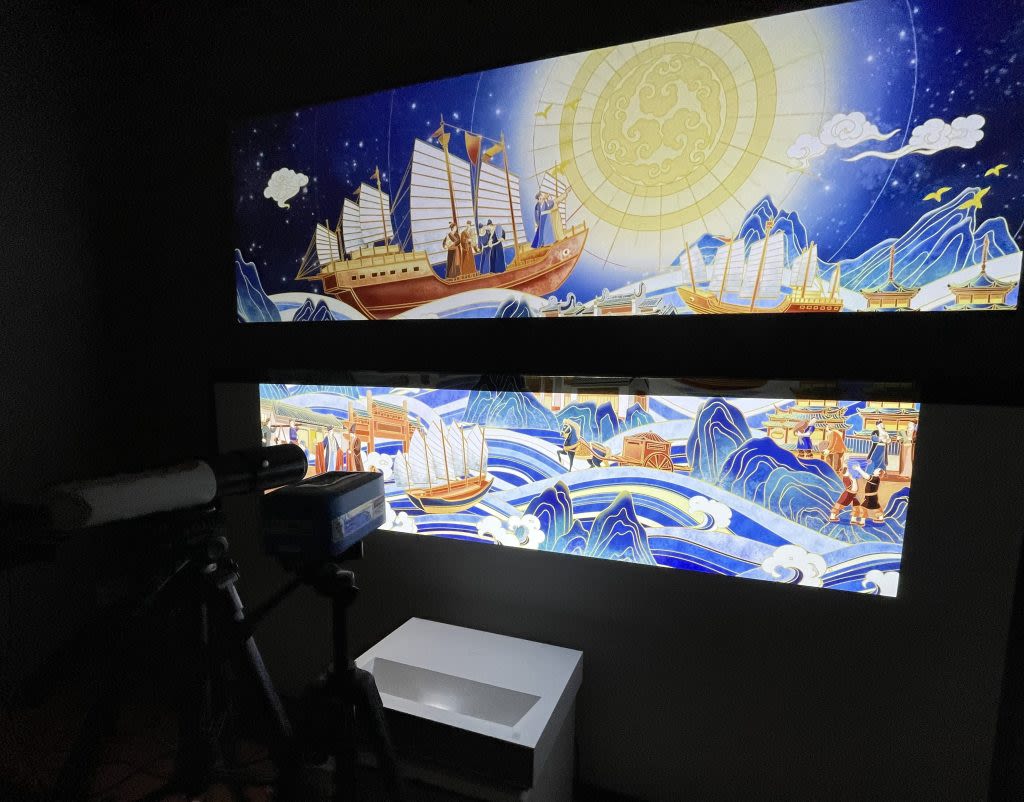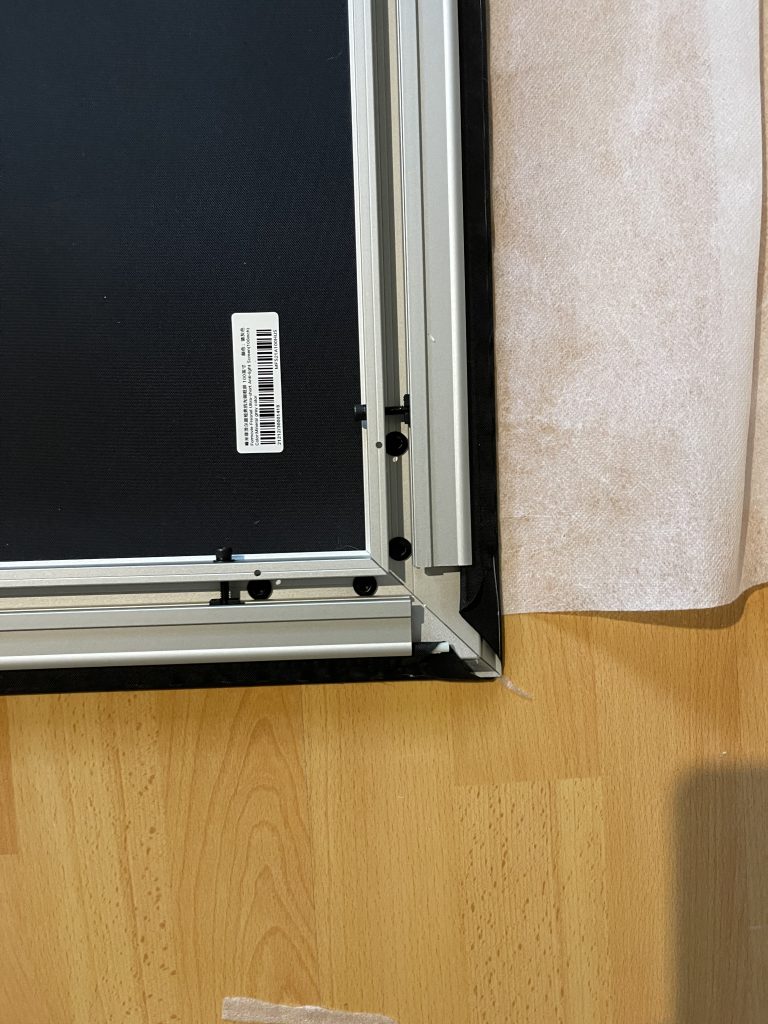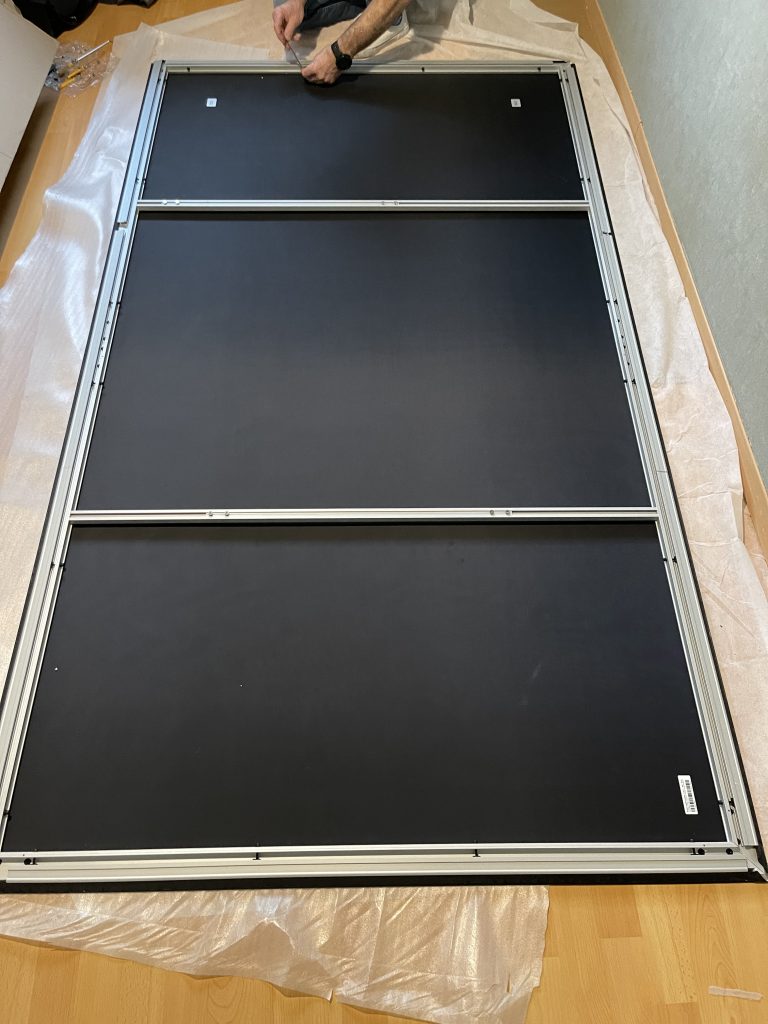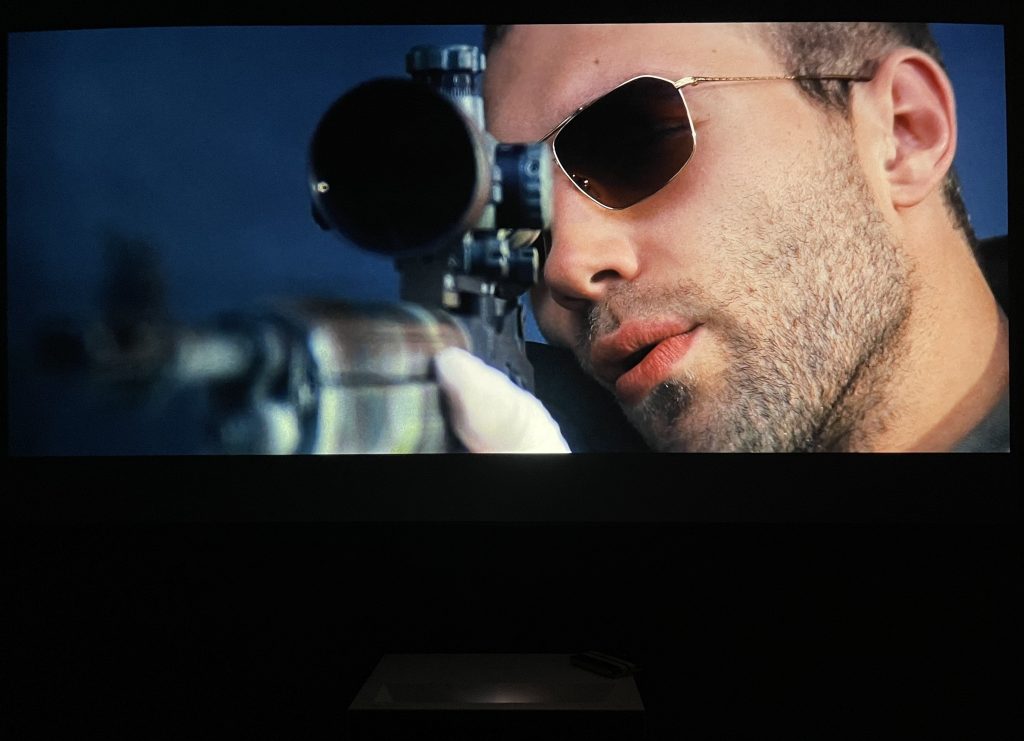This review of the Formovie Fresnel UST screen was written by our good friend Grégory over at the French blog www.mondoprojos.fr. He’s generously allowing us to share his thoughts on this revolutionary ultra short throw projector screen. You can find the original article in French here. All opinions and measurements are solely his. So without further ado, ladies and gentlemen, we give use the review of the Formovie Fresnel ultra short throw projector screen. Take it away Greg!
Formovie Fresnel Laser TV Projector Screen Review
For this review, I must confess that I am very late. Indeed, the Formovie Fresnel screen has been sitting in my test room since November 2022. It is therefore without delay that I will reveal its strengths and weaknesses to you.
What is a Fresnel screen?
Here is already for the theory, a Fresnel screen is a type of screen used in many optical devices, such as projectors, virtual reality glasses and magnifying glasses. It takes its name from the French physicist Augustin-Jean Fresnel, who invented this type of lens in the 19th century. These lenses are made up of concentric circles that refract light in such a way as to concentrate the light rays from the source.
Much like a Fresnel lens a Fresnel projector screen is made up of a series of rows that have specific profiles. These screens are designed to refract light from a projector in such a way as to concentrate the light rays towards the viewer and to disperse light coming from other direction so they don’t affect the picture..
These differ from a lenticular projector screen which uses tiny parallel rows to reject light from above the screen while allowing the projected light to reflect off the underside back towards the viewer.
 Lenticular ALR Screen VS. Fresnel ALR Screen
Lenticular ALR Screen VS. Fresnel ALR Screen
The primary benefit of a Fresnel projection screen is its ability to focus light, resulting in a brighter, sharper image. However, they can also have drawbacks, such as moiré effects, image distortions, a more narrow viewing cone and sharpness problems at the edges of the screen.
How does the Fresnel pattern help the Formovie fixed frame ultra short throw projector screen?
The Formovie UST screen is a Fresnel projector screen whose projection surface is made up of a series of concentric striated circles whose origin is located in the middle of the bottom of the screen. Fresnel screens reject any light that does not come from below the center of the screen.
They are therefore effective in blocking both ceiling light and parallel sources of ambient light such as sunlight coming in from windows on the side. This type of projection canvas focuses light towards the viewer which results in a brighter image for people seated directly in front of the screen, but a degraded off-axis viewing experience.
 White screen and Fresnel and measurement probes
White screen and Fresnel and measurement probes
Its dimensions are 87.8×49.7×0.98 in (for the 100 inch version) and has a weight of 27.3 lbs. with an aluminum frame. The manufacturer announces a neutral screen gain of 1 with a very limited viewing angle of 50°, which confirms what I described to you just above, it is better to stay facing the screen. The more you move away from the central axis, the more you will lose perceptible luminosity.
The Formovie Fresnel Screen is available from ProjectorScreen.com for $999. This is a phenomenal deal for a true ultra short throw projector screen.
Assembly
Before testing the screen I had to assemble it. The assembly, with help from a friend, took about 3 hours for the assembly and hanging the screen in my room. Below are photos of the various stages of assembly.
 Packaging
Packaging
 Cloth
Cloth
 Frame and fixing screws
Frame and fixing screws
 Grab bars
Grab bars
 Wall mounting kit
Wall mounting kit
 Screen fixed to the wall
Screen fixed to the wall
I have already mounted and tested several complex screens from XYScreen or Fengmi and I must say that the fabric tensioning device featured on the Formovie Fresnel screen is the best. Indeed, most competitors use springs to be stretched on fiberglass bars, it is tedious and sometimes the tension is not optimal. I found none of this with the Formovie model, which has selected a high-performance screw-based system and which makes it possible to have a screen stretched like a drum.
The assembly instructions are in English. The rigidity of the aluminum frame is further reinforced by two support arms on which the wall fixing device is positioned. The latter is sliding, which makes it possible to correct placement errors without having to drill new holes in the wall.
Test conditions
To judge the picture produced by the Fresnel screen on the light diffused by an ultra-short-throw projector (Ah! yes, this is a screen reserved for USTs, it is important to specify that), I first performed a calibration of my Formovie C3 on a neutral white Vividstorm screen using a streamlined K10A colorimeter with a Jeti 1501 Hi Res reference probe.

Both screens are the same size 100 inches diagonally or 87.7” at the bottom.
The Chromapure diagrams, taken from my calibration report, show the results obtained after calibrating the Cinema 3 on the white canvas. They are listed under “before”. Fresnel measurements without calibration are marked “after”.
 Impact on color temperature
Impact on color temperature
The study of the gray scale makes it possible to highlight the most significant deviations and to note that the Fresnel canvas leads to a slight increase in red and a notable reduction in blue. The color temperature on the white canvas which was 6571K goes to 6090K on the Fresnel. The deltaE spread of 2.1 on the Vividstorm is increased to 5.3 on the Formovie screen.
 Fresnel screen impact on RGB levels
Fresnel screen impact on RGB levels
On the color space, the change is less obvious, but I note however some differences in Cyan and Magenta (secondary colors).
 Fresnel screen effect on CMS
Fresnel screen effect on CMS
Contrast, Brightness and Gain:
“Gain” is a term defined by the industry as the ratio of the light reflected from a screen to that of a perfect matte white surface, called a Lambertian surface. By definition, matte white has a value of 1.0 (unity gain). Therefore, a 1.0 gain screen reflects the same amount of light as a perfect matte white surface. A matte white (or unity gain) surface reflects all colors evenly and in all directions.
In the context of technical screens, the Gain is not uniform over the entire surface of the fabric and we then speak of “Peak Gain”. This is the maximum value obtained at the center of the screen and depending on the quality and type of canvas, the further one moves away from this point, the more the measured luminance value will decrease.
In the case of the Formovie Fresnel, the manufacturer announces a gain of 1. My measurements show a peak gain of 0.9. Indeed, the luminance which was 23 fL on the 23.7 fL white screen is now only 20.9 fL on the Fresnel screen, i.e. a loss of 2.8 fL.
And the more we move away from the center, the more the Gain will decrease to reach 0.5 on the extremities of the image.
 Gamma and contrast impact
Gamma and contrast impact
If we lose brightness, the gain in contrast (and therefore the respect of the promises of a technical screen) is there. The white screen combined with the Formovie C3 displays a sequential contrast of 2344:1 against 2588:1 for the Fresnel screen. The Ansi contrast of 64:1 on the Vividstorm, also sees a slight improvement to 84:1 on the Formovie Fresnel screen.

If we summarize the Gain of 1 is almost there and the restricted viewing angle is also there.
If you have a large family and are looking for a screen for your UST laser projector, then it is better to consider the Spectra Projection Vantage UST screen and its significantly wider viewing cone.
Hot spot search (uniform light distribution):
 Hotspot search
Hotspot search
Visually on film images, I do not suffer from the presence of a luminous halo (hot spot) at the bottom center of the image. On the other hand, my measurements show that this part of the image is indeed brighter than the rest of the screen.

Glitter effect and smoothness of the image:
The image of this canvas is not impacted by the glitter effect. Bright backgrounds are clean and smooth and this benefits image accuracy.
Subjective opinion
After my comparative white screen and Fresnel measurements, I hastened to carry out a specific calibration of my Formovie Cinéma 3 for the Formovie screen. I must say that the main winners of this couple are contrast and image precision.
 Mad max 2 4K HDR C3 and Fresnel screen
Mad max 2 4K HDR C3 and Fresnel screen
I am used to ultra short throw ALDP laser projectors and overall they are very similar in terms of rendering and they offer the best current DLP contrast. The Fresnel manages to push the visual cursor even further and when you know that it is the most important visual factor for the viewer, it is easy to understand why I am charmed by its impact.
In the cave scenes at the beginning of Mad Max Fury Road, we border on the sublime with this mixture of dark elements with details that contrast with the few luminous elements of this passage.

Going through the calibration box allows you to benefit from natural skin tones on the beginning of Jack Reacher, the 1080p Burosch test charts or even on the 4K HDR extracts projected by Cinema 3.

Above and below you will find some visual examples of the image produced by the Formovie Fresnel / Cinema 3 combo.


Conclusion
It's beautiful, precise, natural and contrasting. Here are my impressions after all these months with the Fresnel screen in my test room. If we are alone or in a couple (who like to sit close to each other), I can endorse the use and implementation of this type of screen, because then its restricted viewing angle will not be a problem.
On the other hand, for family use or if you often have friends at home, it is better to consider purchasing a lenticular screen made for laser TVs like the Spectra Vantage UST screen.
Indeed, the Formovie Fresnel ultra short throw projector screen performs brilliantly its mission of preserving the contrast of our laser TV projectors, but with the added bonus of a more open field of vision.
What I like:
- The quality of the screen and its canvas tensioning system
- The low price
- A nice effect on contrast and image precision
What I don’t like :
- The viewing angle is too restricted.